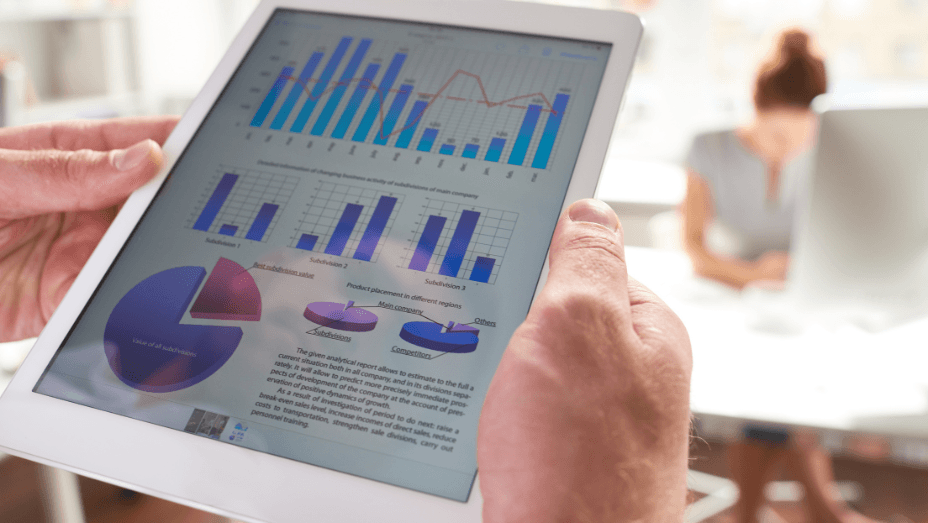Sustainability is no longer just a "nice to have" for businesses. These days, it's more of a "need to have." And, as organizations strive to meet ever-higher sustainability goals, they are turning to data to help them get there. But what exactly is organizational sustainability, what does it mean for a business to be sustainable, and why is it so important in the first place?
At its core, organizational sustainability is about creating long-term value, and that's where data can help. Data allows businesses to better understand their environmental impact, track their progress toward sustainability goals, and make better decisions that help them reduce their environmental footprint.
That said, let’s take a closer look at why you should start working on a data-based organizational sustainability strategy for your business.
TL;DR:
- Organizational sustainability is about creating long-term value and is measured using the triple bottom line, which considers environmental and social factors in addition to financial performance.
- To ensure sustainability, businesses must base their strategy on data by understanding their current performance against the triple bottom line, setting goals for improvement, and measuring progress over time.
- Sustainability strategies can help companies reduce their environmental impact, improve their bottom line, and position themselves for long-term success.
- Developing an organizational sustainability strategy involves defining your vision, mission, and values, identifying the issues to work on, prioritizing the issues, developing a plan for change, and monitoring progress over time.

Organizational Sustainability: What It Is and Why It’s Important
There are many reasons why organizational sustainability is important, but first, let's start with what it is. Organizational sustainability is a concept and competitive strategy used to enhance an organization's ability to create sustainable change. Boudreau and Ramstad (2005) refer to it as "achieving success today without compromising the needs of the future," while the Chartered Institute of Personnel and Development (CIPD, 2012) describes the essence of sustainability in an organizational context as "the principle of enhancing the societal, environmental and economic systems within which a business operates".
Think about it: most people want to live as well as their parents, and they want their children to have similar opportunities. The same logic applies to businesses – most managers want their company to be at least as profitable as it has been in the past and, ideally, for profits to increase. Based on this logic, organizational sustainability can be defined as the ability of firms to respond to their current, short-term needs, without compromising their ability (or that of others) to meet their future needs.
This is often measured using the triple bottom line, which considers environmental and social factors in addition to financial performance: Planet, People, and Profit. These three factors are also referred to as the 3Ps of sustainable business and, if we make a sustained effort to improve them, we'll all benefit.
Planet
In short, "planet" is about taking care of our natural environment (e.g., reducing carbon emissions, restoring biodiversity, desertification). An organization can achieve this by ensuring that it can continue to have a positive impact on society and the environment.
People
"People" is about working together and improving the lives of all members of the community (diversity, equity, inclusion). In addition, a sustainable organization helps attract and retain talent, as employees increasingly look for organizations that have a good reputation for sustainability.
Profit
Finally, "profit" is about sustainable innovation and opportunity. A sustainable organization is what moves us forward toward a better future, but it is also what protects us from risk, as sustainable organizations are usually better able to weather economic downturns and other challenges.
The best way to ensure organizational sustainability is to base your strategy on data. This means understanding your current performance against the triple bottom line, setting goals for improvement, and measuring progress over time. It also means engaging with employees, customers and other stakeholders to understand how they would like to see the strategy implemented in the organization.

Why Do You Need a Sustainability Strategy?
As our world becomes more digital, the impact of our actions on the environment is also becoming more apparent. A recent study, "On Global Electricity Usage of Communication Technology: Trends to 2030," estimates that IT, if it were a country, would be the fifth largest greenhouse gas emitter in the world.
To stay ahead of the curve, it is essential to develop a sustainability strategy, as companies are now being held accountable for their environmental impact in ways that would have been unthinkable just a few years ago. And a sustainability strategy is simply more effective when it relies on data.
Data is the lifeblood of digital transformation. Knowing your company's carbon footprint can help you set realistic goals for reducing your environmental impact – but that's not all. Data can help you identify many other areas where your company can operate more efficiently in the long run.
To sum up, the benefits of having a sustainability strategy are numerous. Not only will it help you reduce your environmental impact, but it can also improve your bottom line. Investing in sustainability now will position your company well for the future and can ensure its long-term success.
Developing Your Organizational Sustainability Strategy: 5 Key Steps
Here’s how to start developing your organizational sustainability strategy and take the first step in the journey to a more sustainable digital future:
Define Your Vision, Mission, and Values
The first step in developing your organizational sustainability strategy is to define your vision, mission and values, and set clear goals. You need to know what you want to accomplish in order to achieve that goal. Once you have established your goals, you can begin to collect data. This data will serve as the basis for your decision making and help you identify potential areas for improvement.
Identify the Issues
The second step is to assess your current state and identify the issues you want to work on. This involves taking a close look at how your organization is functioning and identifying areas where improvements can be made. The data you collected in the previous step will be helpful here. Once you have an overview of the current state, you can begin to develop a plan for change.
Prioritize the Issues
The third step is to set priorities. You may have found several issues you'd like to work on, but not all aspects of sustainability are equally important from the very beginning, so you need to prioritize which areas to focus on first. When prioritizing, you should also consider the resources you have available and the time frame in which the changes need to be made.
Establish Targets and KPIs
The fourth step is to create your action plan – or action plans, as needed. Once you have prioritized the areas you want to focus on, you need to develop specific plans for implementing these changes, including targets and KPIs. These plans should detail who is responsible for each task, what needs to be done, and by when the tasks need to be completed.
Implement
The fifth and final step is to implement your plan, monitor progress, and adjust course as needed. At this stage, it's important to make sure that the changes are having an impact on your organization. If you find that the issues you started with aren't as important to your organization as you thought and aren't having much impact on the bottom line, go back to the drawing board!

Why Is Data So Important for Your Sustainability Strategy?
Organizational sustainability strategies require a holistic approach in which economic, social, and environmental aspects are intertwined and interact, and data that can be relied upon. Here's why:
Identifying Sustainability Risks and Opportunities
Data can help organizations identify sustainability risks and opportunities. For example, if an organization's data shows that its energy consumption is increasing, it can use that information to develop strategies to reduce its environmental impact – perhaps a distributed workforce model could help?
Measuring Progress Towards Sustainability Goals
Data can also be used to measure progress toward sustainability goals. For example, if an organization's goal is to reduce its greenhouse gas emissions by 10% over the next five years, data can be used to track progress and ensure that the goal is on track to being met.
Developing and Implementing a Successful Sustainability Strategy
Companies that lack a solid data foundation are often at a competitive disadvantage when it comes to developing and implementing a successful sustainability strategy. Data provides the insights needed to make informed decisions about where to allocate resources and how to measure progress. Without it, it's hard to set ambitious but achievable goals or assess whether current efforts are having the desired impact.
Communicating Sustainability Performance to Key Stakeholders
Data can help organizations communicate their sustainability performance to key stakeholders. For example, if an organization's data shows that it has made significant progress in reducing its environmental impact, it can use this information to inform investors and other stakeholders about the success of its sustainability strategy.
Improving Transparency Efforts and Driving Better Brand Loyalty
Organizations that don't have a solid data foundation may not be able to identify risks and opportunities, measure progress, or effectively communicate their results. As the world increasingly demands transparency from companies about their sustainability efforts, strong data practices will lead to better brand loyalty in the long run.
In summary, companies should have a robust data analysis process in place so that they can build a solid foundation for their sustainability strategy. We at YAROOMS believe strongly in the power of data and use it as a way to understand how we're doing when it comes to our current sustainability performance and also as a tool for pinpointing where new sustainability opportunities lie.
How do things look at your company? Do you believe that sustainability efforts often make good business sense, or are you not yet convinced to develop a data-driven sustainability strategy? We are eager to hear more about your sustainability goals. In particular, we would love to know how interested you are in environmentally or socially responsible products and services – let us know!
%20(24).png)






